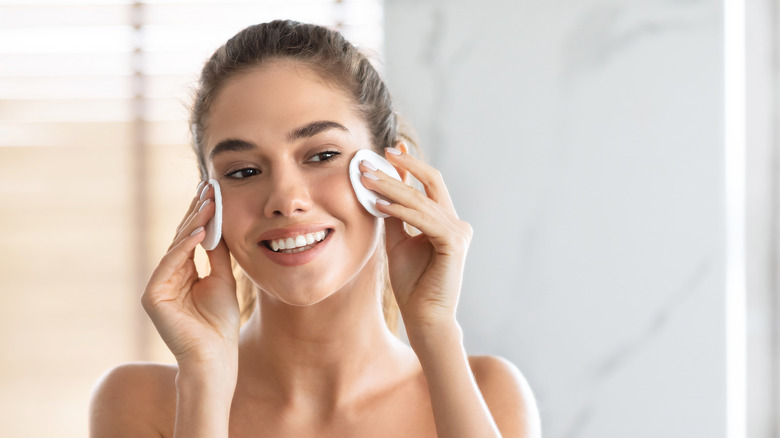Is It Safe To Use Tranexamic Acid And Retinol Together?
While the skincare industry is slowly expanding, so are our product options. New and improved skincare ingredients are constantly coming out to consumers with the promise of helping us get the glowy skin we want. While not every skincare ingredient will work with your skin, it's always worth a try to see if you can find the right combination of ingredients that can help prevent and treat a range of issues.
Although combining skincare ingredients is a great way to target multiple problems at once, it isn't always the best option. For example, retinol is a potent ingredient that can penetrate deep into the skin to help with various skin issues. Since this ingredient is harsh, it's best to avoid mixing it with AHAs and BHAs, per The Inkey List. A combination of these ingredients could result in intense irritation and drying of the skin.
When it comes to tranexamic acid, which is known for being suitable for most skin types, you can use it in conjunction with retinol. But before combining products, it's important to know exactly what's in them so you avoid any potential irritation and get the most out of them.
What is tranexamic acid?
Tranexamic acid is one of the latest trending ingredients that can help with the discoloration of the skin and can help prevent future dark spots from forming. While most ingredients that provide these benefits are too potent to use with other ingredients, tranexamic acid is a water-soluble synthetic that is a great partner for other skin ingredients like retinol, according to Paula's Choice. A good choice for dealing with sun damage, tranexamic acid is a flexible ingredient that can easily fit into your daytime and nighttime routines. Since tranexamic acid doesn't target discoloration in the same way as retinol, you can use them in the same skincare routine.
As opposed to tranexamic acid, retinol is a classic aggressive ingredient. Retinol can help with discoloration and hyperpigmentation, reduce the appearance of aging, and clear acne. Although retinol is available in various forms, you can only buy the higher concentrations with a prescription. Higher doses of retinol concentration can help in cases of cystic acne and other skin issues that don't ease up with a regular skincare routine.
If you have sensitive skin, you might find that the combination is too drying for your skin. In that case, you may want to try tranexamic acid by itself.
How to combine them
Since it's safe to use tranexamic acid and retinol in the same routine for most skin types, it's essential to establish an order of products to avoid them counteracting each other. As you would with retinol, patch-test your tranexamic acid if you've never used the ingredient before. Start by applying this ingredient once a day before increasing your usage. You can find products that combine retinol and tranexamic acid together, or you can layer them from thinnest to thickest. While tranexamic acid can be used every day, you'll need to build your retinol use up more slowly. Most people aim for three times a week, or every other day (via Healthline).
Regardless of if you are only using one of these ingredients or both, always use sunscreen. While you should already be using sunscreen daily, it's essential for protecting your skin against harmful UV rays. When using acids like retinol and tranexamic acid, your skin will be highly vulnerable to the effects of the sun. Avoid redness, irritation, and damage by applying a significant amount of sunscreen before heading out the door.


